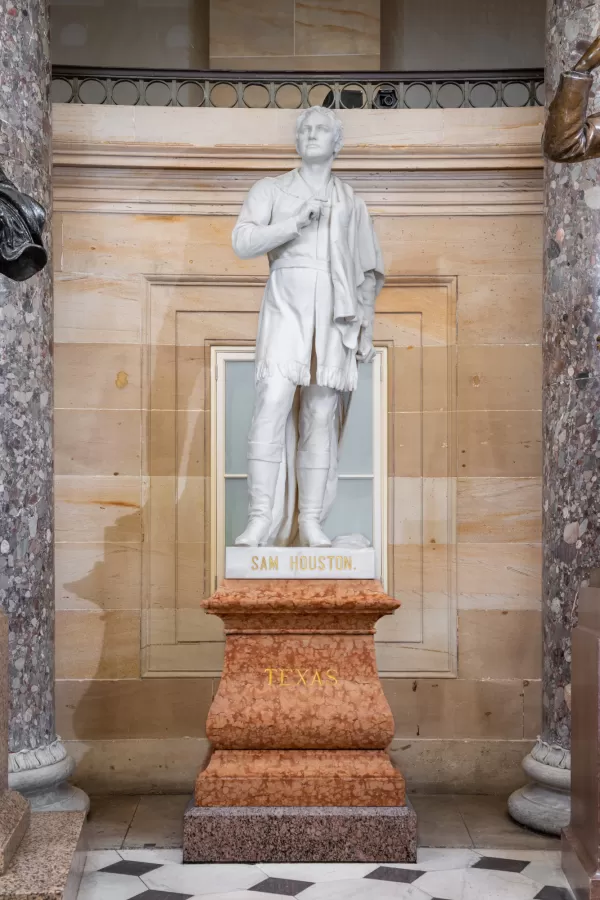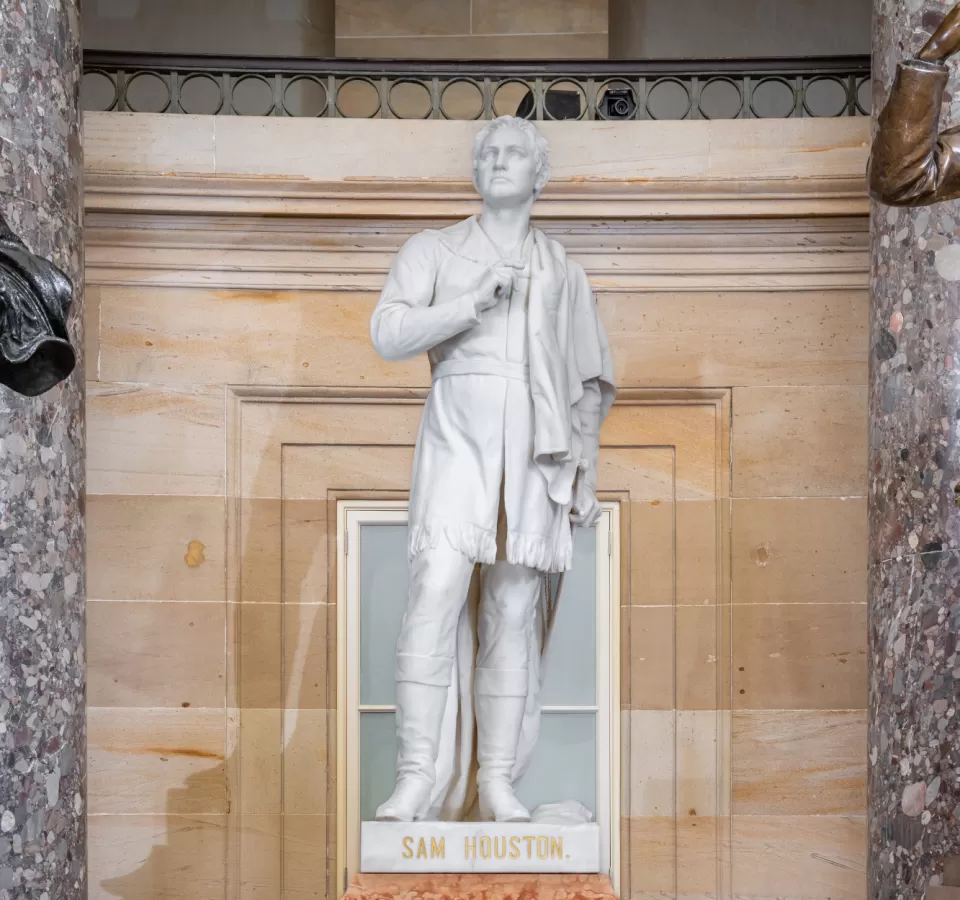This statue of Sam Houston was given to the National Statuary Hall Collection by Texas in 1905.
Born on March 2, 1793, near Lexington, Virginia, Sam Houston had only one year of formal schooling. As a young adult he lived with the Cherokee Indians for three years before entering the militia during the War of 1812, in which he served under Andrew Jackson. In 1818 he resigned from the Army; he studied law, was admitted to the bar, and in 1819 was elected attorney general of the Nashville district.
An outstanding stump speaker, he was elected to the U.S. House of Representatives and served from 1823 to 1827. He became governor of Tennessee but resigned in 1829 to rejoin the Cherokees after his wife had left him. The next six years Houston spent on diplomatic missions and business journeys in Indian country and Texas. In 1833 he was a delegate to the San Felipe constitutional convention, which petitioned for Texas's separation from Cohuila. After the Texas Revolution, he succeeded Austin as commander-in-chief. His military leadership secured Texas independence and Houston was elected president of the Republic, serving from 1836 to 1838 and from 1841 to 1845.
In 1845, when Texas joined the Union, he was elected one of the first senators. A Union Democrat, he was the only southern senator who voted for the Compromise of 1850, opposed the Kansas-Nebraska Bill, and voted against secession. In 1859, despite charges of treason and cowardice, Houston was elected governor; however, he was deposed when he refused to take the Confederate Oath of Allegiance. He retired to his farm at Huntsville, Texas, where he died on July 26, 1863.

